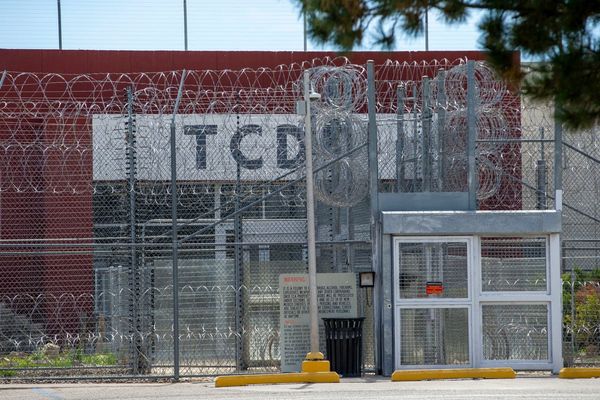Grocery store layouts are carefully designed to influence shopper behavior and maximize sales. One common strategy is placing high-demand staple items at the back of the store. This encourages customers to walk through more aisles, increasing exposure to other products. While items like milk and eggs are famously located in the rear for this reason (and for proximity to coolers/loading docks), other products and sections often found in the back corners or less-trafficked areas warrant a closer look. Some might be great deals, while others require caution. Here are ten types of items often found in the back of the store, and when to be discerning.

1. Dairy Products (Milk, Yogurt, Cheese)
Milk, yogurt, cheese, and butter are almost universally located along the back wall or in a far corner. This is partly due to the need for large refrigerated cases connected to efficient cooling systems, often near delivery docks. The primary strategic reason, however, is to draw shoppers through the entire store, as these are high-frequency purchases. When to be cautious: Always check expiration dates carefully, especially on items that might have been pushed to the back of the shelf or seem less frequently restocked.
2. Eggs
Like dairy, eggs are a staple typically found in refrigerated cases at the rear of the store. Their placement ensures most shoppers will traverse a significant portion of the store to reach them. When to be cautious: Open the carton and inspect eggs for cracks before purchasing. Check the “best by” date, opting for the freshest available, especially if you don’t consume eggs quickly.
3. Frozen Foods
The frozen food aisles, with their long rows of freezers, are often situated along a perimeter wall, sometimes towards the back or a side extremity of the store. This placement relates to the significant energy and infrastructure required for these units. When to be cautious: Inspect packaging for signs of thawing and refreezing (like excessive ice crystals inside a bag or a misshapen box). Ensure items feel solidly frozen. Avoid packages that are torn or damaged.
4. Bulk Meat Packages (Sometimes)
While the main butcher counter might be prominent, larger “family pack” or bulk meat packages are sometimes located in refrigerated bunkers or sections towards the back, especially in warehouse-style stores or larger supermarkets. When to be cautious: Examine “packed on” and “sell by” dates meticulously. Ensure the packaging is intact and there are no signs of discoloration. Only buy bulk if you can use or freeze it properly before it spoils.
5. Seasonal Overstock or Clearance Items
The very back corners or far end caps can sometimes be designated spots for seasonal overstock (e.g., holiday items after the season) or general clearance merchandise with damaged packaging or nearing expiration. When to be cautious: For food items, check dates extremely carefully. For non-food items, inspect for damage to ensure the product is still usable despite cosmetic flaws in the packaging. Understand the store’s return policy on clearance goods.
6. Large Bags of Pet Food

Big, heavy bags of dog or cat food are often placed in a less central aisle, sometimes towards the back or side of the store, due to their bulk and weight. This placement might also be strategic if the pet aisle is an extension of household goods. When to be cautious: Check for tears or damage to the bag that could compromise freshness or indicate pest issues. Note the “best by” date, especially if buying very large bags that will take time to use.
7. Water Softener Salt and Other Bulky Utility Items
Items like large bags of water softener salt, charcoal for grilling, or bulk cleaning supplies (in warehouse clubs) are often found in less-trafficked areas, sometimes near the back by loading docks or garden centers (if applicable). Their placement is often due to bulk and less frequent purchases. When to be cautious: Ensure bags are intact. For items like charcoal, check if they’ve been exposed to moisture, which can affect performance.
8. Restrooms and Employee Areas
While not items for sale, restrooms and doors leading to “employee only” back rooms (stock rooms, offices) are typically located at the rear or sides of the store, away from prime selling space. When to be cautious: This isn’t about buying, but be aware that high-traffic areas near restrooms might sometimes have more floor spills or clutter. Carts left near the stock room doors might obstruct aisles temporarily.
9. Specialized or Niche Diet Sections (Sometimes)
In some older store layouts, sections for specialized dietary needs (like gluten-free, extensive health foods, or bulk international spices) might have been added later and tucked into less prominent aisles towards the back or a corner, rather than being integrated into main category aisles. When to be cautious: Check expiration dates, as lower traffic in these sections could mean slower turnover for some niche products compared to high-volume items in central aisles.
10. Discounted Bread or Bakery Outlet Racks
Stores with in-house bakeries often have a rack for day-old or near-expiry bread and baked goods, sold at a discount. This rack is frequently located near the bakery department itself, which is often towards the back or a side perimeter of the store. When to be cautious: Inspect items for freshness and mold. Only buy what you can use quickly or freeze immediately. These items have a very short remaining shelf life.
Navigating the Store’s Back End Wisely
The back of the grocery store holds many essential items, strategically placed to guide your shopping journey. It can also be a spot for specific bulk goods, clearance finds, or specialized sections. While some items there require no more caution than those in the front, it’s always wise to be a discerning shopper. Pay close attention to expiration dates, packaging integrity, and product condition, especially for perishable goods, clearance items, or products in less frequently shopped sections. Understanding store layout strategies helps you shop more effectively.
What items do you typically find or seek out in the back sections of your grocery store? Have you found any unexpected deals or reasons to be cautious there? Share your experiences!
Read More
4 Store Aisles Designed to Make You Feel Guilty While Shopping
This Common Grocery Store Aisle Is Making You Fat and Broke
The post 10 Items Often Sold In The Back Of The Store: When to Be Cautious appeared first on Grocery Coupon Guide.







